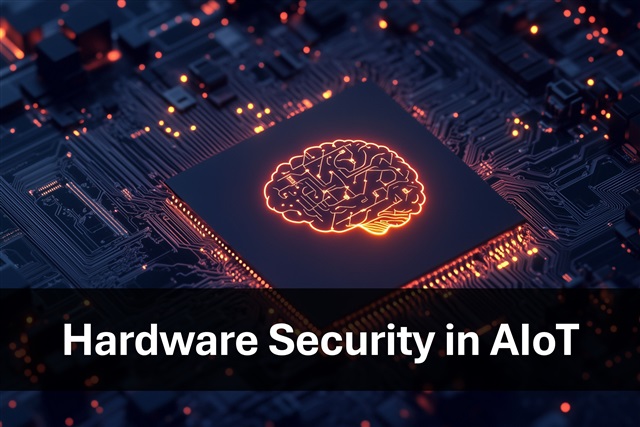With the widespread adoption of AIoT (Artificial Intelligence and Internet of Things) applications—from smart home devices to smart manufacturing, connected vehicles, smart cities, infrastructure and defense systems—the reliance of digital devices on flash memory for code storage has rapidly expanded. Memory is no longer just a medium for data storage; it now serves as the carrier for firmware, the repository for AI models, and the guardian of identity and authorization data. Ensuring security of flash memory directly determines the trustworthiness of the devices themselves.
Risks from Real World Applications
-A smart doorbell was compromised and used for remote surveillance of households by hackers.
-A smart camera product line was infected with malware due to poor memory protection, causing large-scale corporate network breaches.
-A battlefield drone was hijacked. Investigation revealed its unprotected flash memory exposed flight parameters and credentials.
When memory becomes the convergence point for both data and instructions, a single breach can collapse all layers of defense.
The Changing Role of Memory in AI Systems
The introduction of AI, especially in edge devices, has made the role of memory even more critical. Today, memory not only stores data but also holds AI model parameters and behavioral decision logic. The requirements for memory integrity and non-repudiation have increased significantly. If AI models are tampered with, it can lead to erroneous decisions or even malicious behavior.
Moreover, AI-driven real-time responses demand that memory supports lower latency and higher confidentiality. Traditional security designs focused solely on data protection can no longer meet the needs of modern devices.
The Challenge of Compliance and the Surge of Standards
Global regulations around IoT and industrial device cybersecurity are intensifying. The EU's Cyber Resilience Act, the U.S. IoT Cybersecurity Improvement Act, ISO 21434 for automotive systems, and IEC 62443 for industrial control systems all require strong confidentiality and data integrity—even at the memory level. Flash memory must now address both functional safety and cybersecurity challenges.
To learn the latest cybersecurity regulations and trends, download the hardware security whitepaper for free.
Rethinking Memory Security Assumptions
Historically, memory was treated as a peripheral component, with security left to the main controller. But today's attackers use physical access tools, firmware injections, and interface-level attacks to exploit memory. Flash memory must now adopt active defense mechanisms, including:
- Hardware-level access control
- Data encryption and firmware authentication
- Event logging and anomaly detection
- Logic-level separation and multi-factor verification
Redefining the Role of Secure Flash Memory
To truly counter next-generation risks, flash memory should integrate secure logic circuits, providing secure boot, firmware authentication, key management, encryption engines, and access control. Such designs greatly reduce the risk of edge devices being compromised, controlled, or having their data stolen.
In product design, special emphasis shall be placed on the concept of 'establishing a root of trust' through Secure Boot and key storage mechanisms. This ensures that every device boot starts from trusted code, preventing malicious firmware implants. Key storage shall be implemented in a pure hardware architecture, isolating sensitive information in inaccessible secure zones, significantly enhancing both physical and logical security.
For firmware security, compliance to firmware authentication and resilience design standards such as NIST SP 800-193. This means not only verifying firmware integrity at boot, but also automatically recovering to a safe state in the event of an attack or anomaly, ensuring continuous device operation and protection from malicious software.
Furthermore, secure storage solutions shall use a pure hardware architecture, requiring no external software or controller assistance, maintaining high security and performance even in harsh environments.
To address supply chain security challenges, advanced digital signature technology is needed, ensuring that every firmware and software update from the manufacturer to the end device can be verified for source and integrity, providing comprehensive secure supply chain support.
To meet post-quantum threats, advanced encryption standards such as CNSA 2.0 (Commercial National Security Algorithm Suite 2.0) compliance is necessary, ensuring that the software update architecture complies with the latest international cybersecurity regulations and meets the needs of high-security applications in government, defense, and automotive sectors.
Winbond W77Q / W77T Secure Solutions and Industry Practice
As a provider of secure logic circuit flash memory solutions, our products have been successfully adopted across diverse applications, including computer peripherals, video conferencing equipment, servers, AI edge servers, and automotive modules. Our designs maintain logical compatibility with existing market architectures to ensure smooth integration and low migration cost.
Our solutions integrate LMS (Leighton-Micali Signature) advanced digital signature technology for PQC (post-quantum cryptography) needs.
Our security architecture is also certified under leading global standards including Common Criteria (CC), FIPS 140-3, SESIP, PSA, IEC 62443, ISO 21434, and ISO 26262—offering customers a reliable and future-ready foundation.
Safeguarding Human-Centered Trust at the Technological Edge
In the AIoT era, memory security is no longer just about storage—it is the foundation of system-wide trust. From household devices to tactical drones, memory holds more than data; it protects privacy, drives enterprises, and underpins societal resilience.
As a Secure Flash Memory solution provider with dedicated logic design, we understand the profound responsibility behind technology. Our solutions offer downward compatibility with mainstream architectures, while meeting stringent global security standards.
True innovation is not just about what we can do—but what we can trust. We are committed to embedding security into every smart node and collaborating with partners, developers, and standards bodies to ensure technology continues to serve human values.
To learn more about Winbond's advanced security solutions, visit Winbond's website or contact Winbond directly, or download the latest Hardware Security White Paper.




